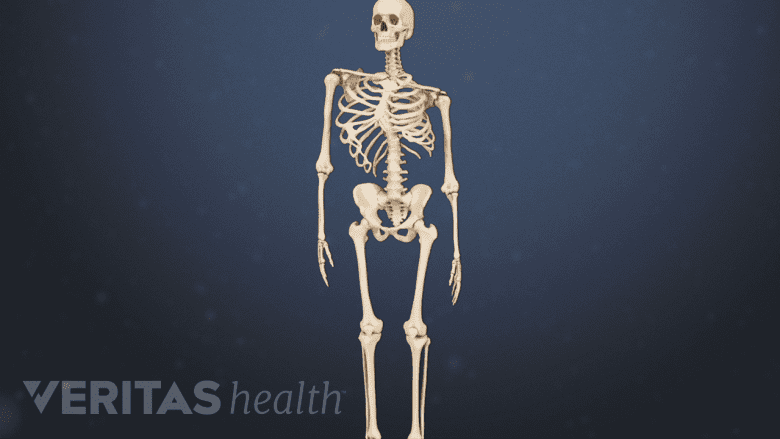There is no cure for Klippel-Feil syndrome (KFS), so treatments focus on managing the symptoms. Treatment programs can vary widely, depending on the severity of KFS, as well as any other conditions that might be present.
In This Article:
- What to Know About Klippel-Feil Syndrome
- Klippel-Feil Symptoms and Associated Conditions
- Klippel-Feil Syndrome Diagnosis
- Klippel-Feil Syndrome Treatment
Special Considerations for Treating KFS
When treating KFS, a thorough medical evaluation must be performed to check for other conditions and abnormalities. Some treatments for KFS may not be an option if other serious conditions are present. For example, if heart and lung abnormalities are present and make general anesthesia a much higher risk, treatments that involve general anesthesia may need to be avoided or only performed as a last resort.
Team Care Approach for KFS

Associated conditions, like scoliosis, demand a multidisciplinary approach in treating Klippel-Feil syndrome.
For patients with KFS, it is common for the health care team to include specialists from multiple fields, depending on the signs and symptoms present, such as:
- Hearing and/or vision deficits
- Spinal deformity (such as shortened neck or scoliosis)
- Chronic pain
- Craniofacial anomalies (such as cleft palate)
- Heart, lung, kidney, and/or bladder problems
- Learning disability
- Strength and/or coordination deficits
If multiple issues must be treated simultaneously, the various specialists may need to coordinate the care plan with each other.
Self-Care for KFS

NSAIDs help reduce pain through their anti-inflammatory effects on muscles and nerves.
For neck pain and/or headaches that might be associated with KFS, some potential self-care measures include:
- Activity modification. If certain activities increase pain or present too great a risk, they may need to be avoided or modified. For example, if a child with KFS reports worsening pain when jumping on a trampoline or doing somersaults, those activities should be avoided (if they have not already been forbidden).
- Ice and/or heat therapy. Applying a cold pack or ice may lower inflammation and pain, whereas a heat pack may help loosen tense muscles and increase blood flow to the painful area. To avoid harming the skin, applications tend to be limited to at most 20 minutes at a time with regular checks of the skin. Some people may prefer heat instead of cold, or vice versa.
Read more about Heat Therapy Cold Therapy
- Over-the-counter (OTC) medications. Numerous OTC medications are available for reducing pain, which may act as an anti-inflammatory or interfere with pain signals to the brain. It is important to read and follow directions on OTC medications to avoid overdoses and/or harmful interactions.
- Different pillow types. In some cases, a pillow can make a big difference in terms of neck pain at night and/or when waking up. It may help to experiment with pillows of different sizes, shapes, and firmness/fluffiness. Some people even prefer no pillow at all.
The treatments noted above relate specifically to KFS and the cervical spine, not the other conditions that can also affect many other areas of the body.
Several other self-care methods may also be of benefit for managing chronic pain, such as healthy eating or relaxation techniques.
See Chronic Pain Coping Techniques - Pain Management
Nonsurgical Treatments for KFS
If self-care measures do not provide enough pain relief, a doctor may recommend one or more of the following:
Physical therapy. A physical therapist or other medical professional can design a stretching and strengthening program to fit the patient’s unique needs. A physical therapy program may help improve strength and mobility while reducing some types of pain and stiffness.
- Prescription pain medications. Opioids, also called narcotic pain medications, are a common painkiller used to manage severe pain on a short-term basis. Prescription-strength muscle relaxants may also be used to reduce painful muscle spasms. These medications tend to only be prescribed on a short-term basis due to the risks for serious side effects from long-term use, including addiction.
- Back brace and/or cervical collar. Depending on the amount of spinal deformity, some patients may benefit from wearing a supportive back brace or cervical collar. A back brace may prevent some spinal deformities (such as scoliosis) from worsening as the body continues to grow.
Injections. Different injections are available that may offer temporary pain relief, depending on the pain source. For example, if a cervical nerve root is inflamed, an anti-inflammatory steroid solution and/or local anesthetic may be injected in the spinal canal’s outer layer to reduce the inflammation.
Radiofrequency ablation (RFA). This treatment uses a needle to place a heat lesion on a facet joint’s sensory nerves to prevent it from sending out pain signals to the brain. RFA can relieve pain for 6 to 18 months (before the nerve eventually grows back) if indeed the nerve was contributing to pain.
Many other nonsurgical treatment options may also be available or recommended.
Surgery for KFS
If surgery is performed for KFS, it is typically to stabilize the cervical spine, to correct a spinal deformity, or to take pressure off of nerves or the spinal cord. For example, surgery may be needed to relieve pressure on a nerve root and/or the spinal cord caused by bone spurs; or surgery may be performed to correct scoliosis (abnormal rotation and sideways curvature of the spine).
There are numerous surgical treatment possibilities for conditions that may accompany KFS. For example, a plastic surgeon may perform surgery for cleft palate (closing a split in the roof of the mouth), or a cardiovascular surgeon may perform heart surgery.

